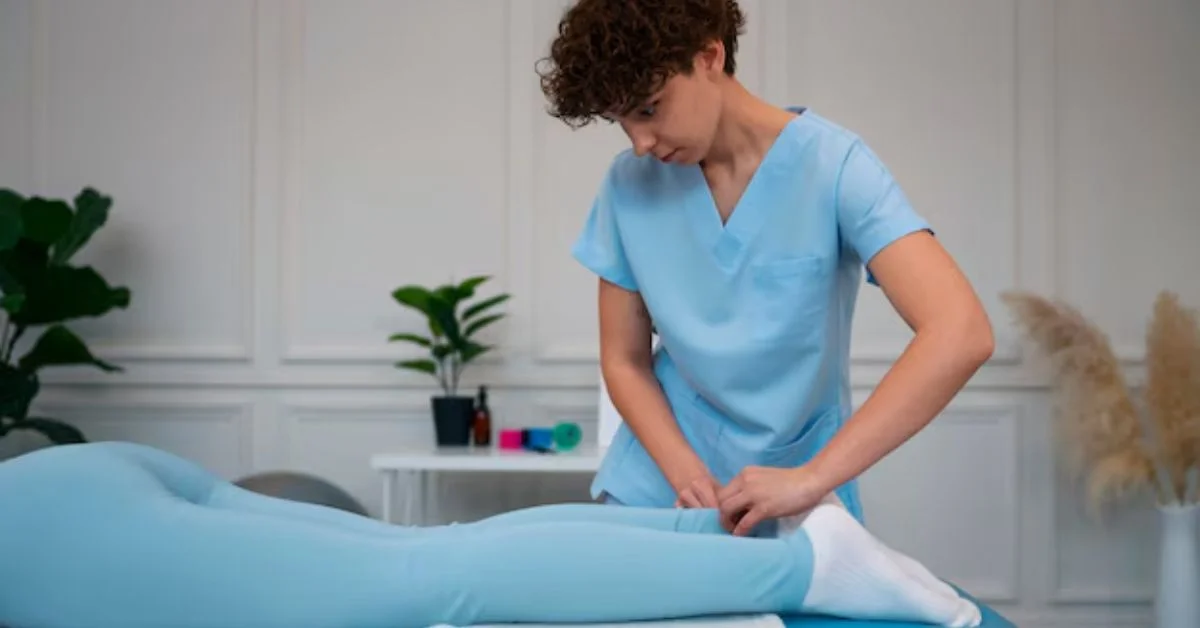Lymphatic massage is gaining popularity as a holistic approach to wellness. This gentle, rhythmic technique not only promotes relaxation but also plays a crucial role in supporting your body’s natural detoxification process. If you’ve ever felt sluggish or puffy, a lymphatic massage could be the answer to revitalizing your system.
Imagine feeling lighter and more energized after just one session. As we uncover the secrets of this unique therapy, you’ll learn how it works and why so many are raving about its benefits. Whether you’re seeking relief from stress or looking to enhance your overall health, understanding lymphatic massage can open doors to new levels of well-being. Let’s dive into this comprehensive guide and discover how you can harness the healing power of lymphatic massage for yourself!
Lymphatic Massage Overview
Lymphatic massage is a specialized form of bodywork designed to stimulate the lymphatic system. This intricate network plays a vital role in maintaining fluid balance and supporting immune function. By using gentle, rhythmic movements, therapists encourage lymph flow, helping the body eliminate toxins more efficiently.
Typically performed with light pressure, this technique targets specific areas where lymph nodes are concentrated. The goal is to promote drainage and reduce swelling while enhancing overall circulation. Many clients find it deeply relaxing and soothing.
Originally developed in the 1930s by Dr. Emil Vodder in France, lymphatic massage has evolved into various styles over the years. Today, practitioners incorporate techniques tailored to individual needs and health conditions, making it accessible for everyone seeking its healing benefits.
Understanding the Lymphatic System
The lymphatic system is a vital part of our immune defense. It consists of a network of vessels, nodes, and organs that work together to transport lymph fluid throughout the body. This fluid contains white blood cells, which help fight infections and diseases.
Unlike the circulatory system, which relies on the heart to pump blood, the lymphatic system has no central pump. Instead, it depends on muscle contractions and movement to push lymph through its channels. As we move or engage in physical activities, this natural rhythm supports healthy drainage.
Lymph nodes act as filters for harmful substances. They trap bacteria and viruses while producing more immune cells when needed. Understanding how this intricate system functions can enhance your overall wellness journey—especially when combined with therapies like lymphatic massage.
Benefits and Risks of Lymphatic Massage
Lymphatic massage offers a range of benefits for those seeking relaxation and wellness. It can help reduce swelling, improve circulation, and promote detoxification by encouraging lymph flow. Many individuals report feeling lighter and more energized after a session, making it an appealing option for stress relief.
However, it’s important to consider potential risks. For some, especially those with certain medical conditions like heart disease or infections, lymphatic massage may not be suitable. It’s crucial to consult a healthcare professional before scheduling your first appointment.
Listening to your body during the process is key. If discomfort arises or if you experience any adverse reactions post-massage, it’s best to communicate with your therapist immediately. Being informed about both the advantages and drawbacks ensures a safer experience tailored to individual needs.
Different Types of Lymphatic Massage Techniques
Lymphatic massage encompasses several techniques, each tailored to stimulate the lymphatic system. One popular method is manual lymph drainage (MLD). This gentle technique uses light pressure and rhythmic circular movements to encourage fluid movement in the body.
Another approach is the use of compression garments or bandages. These help facilitate lymph flow by applying consistent pressure on affected areas. It’s particularly beneficial for those with lymphedema, as it supports tissue health and reduces swelling over time.
Vibrational therapy also plays a role in lymphatic massage. Utilizing sound waves or vibrations, this technique targets specific tissues to enhance circulation and promote detoxification. By incorporating various methods, practitioners can customize sessions based on individual needs and conditions.
The Process of a Lymphatic Massage Session
A lymphatic massage session typically begins with a consultation. The therapist will discuss your health history and any specific concerns you may have. This personalized approach ensures that the treatment is tailored to your needs, enhancing its effectiveness.
Once you’re comfortable on the massage table, the therapist uses gentle, rhythmic strokes aimed at stimulating lymphatic flow. They often start from areas around the neck and gradually work toward limbs and other target areas. The pressure is light; it’s all about encouraging movement rather than deep tissue manipulation.
Throughout the session, communication is key. If something feels uncomfortable or if you’d prefer more focus on certain body parts, don’t hesitate to speak up. The goal is to create a relaxing environment where you can fully enjoy this healing experience.
Finding the Best Lymphatic Massage Services
Finding the right lymphatic massage service can significantly impact your experience and results. Start by researching local professionals who specialize in this specific type of massage. Look for therapists with credentials, certifications, and positive reviews from past clients.
Consider asking friends or family for recommendations. Personal experiences often provide valuable insights into the quality of care you can expect. Online platforms also offer a wealth of information about client satisfaction.
Once you’ve narrowed down your options, schedule consultations to gauge their knowledge and approach. A good therapist will take time to understand your needs and tailor treatments accordingly. Pay attention to how comfortable you feel during these initial interactions; trust is essential when it comes to bodywork therapies like lymphatic massage.
Self-Drainage Techniques for Lymphatic System
Self-drainage techniques for the lymphatic system can empower you to enhance your wellness routine. Simple movements and gentle pressure can stimulate lymph flow, helping with detoxification and promoting overall health. Techniques like deep breathing or light stretching activate this vital system.
One popular method is abdominal massage. By using circular motions on the abdomen, you encourage lymph fluid movement throughout the body. Incorporating simple leg lifts while lying down also aids in stimulating circulation, making it an easy addition to your daily practice.
Don’t forget about hydration! Drinking plenty of water supports lymph function by flushing out toxins effectively. Combine these self-care techniques with mindful practices such as yoga or meditation for even greater benefits to your lymphatic health.
Evaluating the Effectiveness of Lymphatic Massage
Evaluating the effectiveness of lymphatic massage involves a blend of personal experience and expert feedback. Many clients report feeling lighter, more energized, and less bloated after their sessions. These immediate sensations often indicate that fluid retention is being addressed.
To assess long-term benefits, keep track of changes in your body over several weeks. Note any improvements in skin tone, reduced swelling, or enhanced immune response. Journaling these observations can provide valuable insight into how this therapy impacts you personally.
Consulting with a licensed therapist can also enhance your understanding of the results you’re experiencing. They may offer insights on specific techniques used during your session and how they relate to your goals for treatment. Listening to both your body and professional guidance will help paint a clearer picture of lymphatic massage’s effectiveness for you.
When to Consider Lymphatic Drainage
Lymphatic drainage is a powerful tool for various health concerns. If you’re experiencing swelling in your limbs, it may be time to consider this gentle therapy. Conditions like lymphedema often benefit from targeted lymphatic massage, promoting fluid movement and reducing discomfort.
Post-surgery recovery is another ideal time to explore lymphatic drainage. Surgical procedures can disrupt the natural flow of lymph fluid, leading to complications or prolonged healing times. A skilled therapist can help alleviate these issues and foster quicker recovery.
Stress and fatigue are also signals that you might need lymphatic massage. The soothing techniques used in this therapy not only enhance physical well-being but also promote mental relaxation. By addressing both body and mind, you open the door to deeper healing experiences that contribute significantly to overall wellness.
Aftercare and Recovery Tips
After your lymphatic massage, taking care of yourself is key to enhancing the benefits you’ve just experienced. Hydration plays a vital role in supporting your lymphatic system. Drink plenty of water to help flush out toxins released during the massage.
Rest is equally important. Allow your body to recuperate by avoiding strenuous activities for at least 24 hours post-session. Gentle movement like walking can aid circulation without overwhelming your body.
You might also consider incorporating gentle stretching or yoga into your routine in the days following your session. This can promote further fluid movement throughout the lymphatic system and enhance overall relaxation.
Listen attentively to how you feel after a session; this awareness will guide you on what works best for you personally. If any discomfort arises, don’t hesitate to reach out to your massage therapist or healthcare provider for advice tailored specifically for you.
Taking these simple steps can help maximize the healing power of lymphatic massage and support ongoing wellness in both body and mind.









